#Bacterial growth prevention
Text
Water Tank Services
Tank Inspection: Regular inspections are crucial to identify any issues or damage in water tanks services . Professionals assess the tank's structural integrity, check for leaks, evaluate the condition of fittings and valves, and recommend necessary repairs or maintenance.Tank Cleaning: Water tanks accumulate sediment, debris, and microbial growth over time. Professional tank cleaning services involve the removal of sludge, disinfection, and sanitization to ensure the water remains safe and clean.
#Water tank cleaning#Tank maintenance#Tank sanitation#Sediment removal#Algae control#Bacterial growth prevention#Tank disinfection#Water quality improvement#Sludge removal#Tank inspection#Filtration system#Chlorination process#Waterborne diseases#Tank hygiene#Reservoir cleaning#Water purification#Scale buildup prevention#Tank flushing#Decontamination#Rust removal#Tank sterilization#Biofilm control#Tank renovation#Water storage maintenance#Sedimentation prevention.
1 note
·
View note
Text
Importance of Food Preservatives: Ensuring Quality and Safety

Food preservatives, including antimicrobial agents like sodium benzoate and potassium sorbate, natural preservatives such as sorbic acid, and chemical preservatives like butylated hydroxytoluene (BHT), are essential additives added to food to inhibit the growth of bacteria and fungi, thereby enhancing food safety and extending shelf life. These food preservatives prevent the growth of microorganisms, reducing the risk of food poisoning and ensuring the safety of food products. By maintaining physical and chemical stability, preservatives also contribute to reducing food waste and enabling the widespread availability of preserved foods throughout the year. By maintaining the quality and freshness of food items these preservatives can directly reduce food waste. This reduction occurs because preservatives help to uphold the physical and chemical stability of food, thereby minimizing spoilage and ensuring that consumers can access preserved foods consistently throughout the year.By effectively inhibiting bacterial growth and preventing foods from spoiling prematurely, these preservatives ensure that the food supply remains safe, reliable, and accessible, contributing to a more sustainable food system overall.
To read more please visit:
Reachemical chemicals
16479857177
600 Matheson Blvd W Unit 5, Mississauga, Ontario ,ON L5R 4C1.
#reduce food waste#food products#added to food#bacteria and fungi#butylated hydroxytoluene#growth of bacteria#bacterial growth#prevent foods#food safety#sodium benzoate#antimicrobial preservatives#inhibit the growth#shelf life#natural preservatives#sorbic acid#chemical preservation#physical and chemical#prevents the growth of microorganisms#food preservatives#food poisoning
0 notes
Photo

Discovery of Penicillin
The age of antibiotics began in September 1928, with the discovery of penicillin by Alexander Fleming (1881-1955), then a professor of bacteriology at St. Mary's Hospital in London. Previously there were no effective treatments against a range of bacterial infections from pneumonia to sepsis.
Penicillin became the basis for curing bacterial infections including smallpox, cholera, tuberculosis, scarlet fever, pneumonia, gonorrhea, meningitis, and diphtheria. Later antibiotics would form a class of medicines designed to combat, and cure, bacterial infections but also prevent the further growth of such infections.
Background
The use of fungi and molds, which contain antibacterial substances, to treat bacterial infections can be traced back to ancient cultures around the world, but these early attempts were unable to identify the component that provided the medicinal effect. Joseph Lister (1827-1912), an English surgeon and the "Father of antisepsis," recognized the antibacterial component of mold, but did not publish his findings. In the 1870s, Robert Koch (1843-1910), a German biologist, and Louis Pasteur (1825-1895) and Jules Francois Joubert (1834-1910), two French biologists, discovered the germ theory, which established that particular bacteria cause specific diseases. Additionally, they proved that the effects of introducing certain bacteria to various cultures inhibited the growth of more deadly bacteria.
The discovery of penicillin represented a turning point in medical history while Fleming would later be recognized by Time magazine as one of the most influential people of the 20th century:
When I woke up just after dawn on September 28, 1928 I certainly didn't plan to revolutionize all medicine by discovering the world's first antibiotic, or bacteria killer. But I suppose that is exactly what I did.
Continue reading...
169 notes
·
View notes
Note
I’m curious as to how you keep your menstrual blood paintings sanitary, is there a specific method you use to prevent them from getting germy? I imagine the tissue/discharge in menstrual blood would make bacteria more of a concern.
(Side note, I adore your art so much. The way you depict the female body is so so so refreshing. Your art gives off so much power, it’s beautiful!)
Thank you so much for the kind words, I really appreciate it! For the menstrual blood paintings, I scan them after they’re done, so the originals stay in my personal collection. They’ve held up perfectly over the years, with no smell or deterioration (other than natural oxidation of the iron). Even if they do break down eventually, like any natural pigment might, that’s fine with me. The real value for me is in the experience and meaning of creating them. Since I’m into vulture culture and collect things like pelts and skulls, I’m comfortable with materials that others might see as unconventional, but I always know what I’m working with.
Bacteria, mold, and other microorganisms need moisture to thrive. When blood, like other organic materials, is dried out, it lacks the moisture necessary for bacteria to multiply. That’s why drying methods, like with beef jerky, are used to preserve food and other materials, removing moisture prevents decomposition and bacterial growth.
For my artwork, as long as the menstrual blood dries completely and is kept in a dry environment, the risk of germs or bacteria is very low, similar to how dried fabric or preserved animal parts are stable when properly dried and stored.
These pieces are personal, not for sale, and I’m mindful of the whole process. :)
105 notes
·
View notes
Text


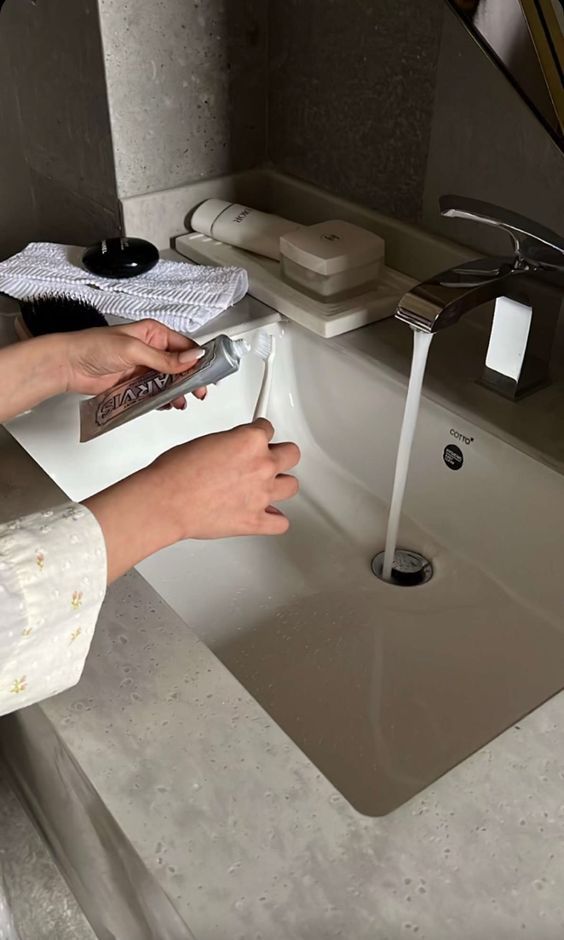
oral hygiene
perhaps since i am a bit younger than most of the people on this app, or since my nana had owned a kindergarten, i am so aware of the importance of hygiene and health practices. i feel that everyone has put simple things like this on the back burner, since covid, since the internet's takeover.
i remember, when i was younger (2015/16ish) (note: i clearly wasn't in kindergarden at the time, but this is when the memories are from), the halls of my nanas kindergarten were lined with posters that encouraged parents to look after their child's health. current kindergartens, and parents--perhaps due to technology and widespread knowledge-- prioritize other things. it's about time we took responsibility of our own health again.
oral hygiene is the practice of keeping your mouth clean and disease-free. it involves brushing and flossing your teeth as well as visiting your dentist regularly for dental x-rays, exams and cleanings.
brushing your teeth:
✩ use fluoride toothpaste to protect your teeth from decay (cavities). fluoride strengthens the tooth's hard outer surface (enamel).
✩ angle the bristles toward the gumline to clean between the gums and teeth.
✩ brush gently using small, circular motions. avoid scrubbing back and forth too hard.
✩ brush all sides of each tooth, including your tongue.
✩ replace your toothbrush when the bristles become worn.
HOT TIP: if you get bored with, or struggle to remember brushing your teeth, consider swapping to a minter (or other pleasantly flavoured) toothpaste. this will encourage you to continue the habit, since it is more enjoyable.
flossing your teeth:
✩ plaque can build up between teeth, leading to gum irritation and gingivitis.
✩ floss daily to remove plaque from these areas.
✩ if plaque hardens into tartar, only a dentist or dental hygienist can remove it.
replacing your toothbrush:
✩ as you use your toothbrush, the bristles gradually wear down. bent or frayed bristles lose their stiffness and effectiveness in cleaning your teeth.
✩ over time, your toothbrush accumulates bacteria from your mouth. bacterial growth on an old toothbrush can contribute to oral infections and bad breath.
✩ you should replace your toothbrush when you notice that the bristles have become worn, or every 3-4 months to prevent the buildup of harmful bacteria.
storing your toothbrush:
✩ before and after brushing, thoroughly rinse the bristles of your toothbrush under hot tap water. this helps remove toothpaste residue, debris, and any airborne bacteria or dust particles.
✩ after rinsing, tap the handle of your toothbrush against the edge of the sink to shake off excess water. this promotes faster air drying and prevents bacterial growth.
✩ store your toothbrush in a cup or holder. keep the bristles up and the handle down. this allows excess water to drain away from the bristles, preventing bacteria buildup.
✩ place the cup or holder in a well-ventilated area, such as a counter or shelf. avoid storing it in a dark, enclosed space like a drawer or cabinet. allowing your toothbrush to air dry completely helps prevent bacterial growth.
✩ avoid cross-contamination by keeping your toothbrush separate from your housemates, or family members.
electric toothbrushes:
✩ some may choose to use electric toothbrushes, where you only replace the head of the toothbrush. electric toothbrushes use oscillating, rotating, or sonic movements to clean teeth and gums more thoroughly. many models have built-in timers to ensure you brush for the recommended 2 minutes. most electric toothbrushes are rechargeable, reducing waste from disposable batteries.
✩ personally, i prefer to use a regular toothbrush, since i feel it does a better job cleaning my mouth. often electric toothbrushes require you to take longer to brush your teeth.
eating choices:
eating choices play a significant role in maintaining good oral health. first and foremost, consuming sugary foods and drinks can lead to increased acid production in the mouth. this acid can erode tooth enamel, making your teeth more susceptible to decay. it's essential to limit your intake of sugary snacks and beverages to protect your oral health.
frequent snacking, especially on sugary and acidic drinks throughout the day can harm your teeth. aim for regular meals rather than constant snacking to give your teeth time to recover between eating episodes.
staying hydration is crucial for overall health, including oral health. dry mouth (which is called xerostomia) can increase the risk of cavities and gum disease. salvia helps neutralize acids and wash away food particles, so drink plenty of water to keep your mouth moist.
remember to maintain a balanced diet, rich in vitamins and minerals. it is essential for healthy teeth and gums. nutrients like calcium, vitamin D, vitamin C, and phosphorus contribute to strong teeth and support gum health. include dairy products, leafy greens, fruits, and lean proteins in your diet.
to conclude:
remember that good oral health allows you to enjoy life by speaking clearly, tasting, chewing, and showing your feelings through facial expressions like smiling!
further reading:
✩ What’s the Most Sanitary Way to Store Your Toothbrush? • Brilliant Oral Care✩The Best Way to Store Your Toothbrush & the Mistakes You May be Making | Gentle Dental (interdent.com)✩Whatever You Do, Don't Store Your Toothbrush Here - CNET✩Why Should You Replace Your Toothbrush? And When? – Mouth Watchers✩How Often Should You Change Your Toothbrush? Healthy Etiquette (healthline.com)✩When To Change Your Toothbrush | Colgate®✩Oral Hygiene | National Institute of Dental and Craniofacial Research (nih.gov)✩Oral Hygiene: Best Practices & Instructions for Good Routine (clevelandclinic.org)
i hope this post was helpful!
❤️ nene
#elonomh#elonomhblog#that girl#becoming that girl#student#productivity#student life#academia#chaotic academia#study blog#wellness#health and wellness#wellness aesthetic#wellness and health#wellness girl#wellness moodboard#wellnessjourney#mental wellness#beauty and wellness#healthylifestyle#wellbeing#healthtips#it girl#it girl aesthetic#it girl energy#pinterest girl#girl blogging#girl blogger#girlblog#hygine
72 notes
·
View notes
Text
The rapid growth of the technology industry and the increasing reliance on cloud computing and artificial intelligence have led to a boom in the construction of data centers across the United States. Electric vehicles, wind and solar energy, and the smart grid are particularly reliant on data centers to optimize energy utilization. These facilities house thousands of servers that require constant cooling to prevent overheating and ensure optimal performance.
Unfortunately, many data centers rely on water-intensive cooling systems that consume millions of gallons of potable (“drinking”) water annually. A single data center can consume up to 3 million to 5 million gallons of drinking water per day, enough to supply thousands of households or farms.
The increasing use and training of AI models has further exacerbated the water consumption challenges faced by data centers.
[...]
The drinking water used in data centers is often treated with chemicals to prevent corrosion and bacterial growth, rendering it unsuitable for human consumption or agricultural use. This means that not only are data centers consuming large quantities of drinking water, but they are also effectively removing it from the local water cycle.
Dry air reduces the risk of corrosion and electrical issues in the sensitive equipment in the data centers. The lack of humidity in water-stressed regions, such as the American Southwest, makes it an attractive location for data centers. This means that the regions in which it is “best” to locate a data center due to its arid environment has the highest marginal cost in terms of water consumption.
In the Phoenix area alone, there are 58 data centers. If each data center uses 3 million gallons of water per day for cooling, that equates to over 170 million gallons of drinking water used per day for cooling data centers. This massive consumption of drinking water for data center cooling puts a strain on the already fragile water supply and raises ethical questions about prioritizing the needs of tech giants over the basic needs of residents and agriculture.
[...]
Optimizing renewable power with AI and data centers at the expense of increasing water consumption is not a sustainable solution. Prioritizing one aspect of sustainability, such as reducing carbon emissions, while neglecting another crucial resource like water creates an illusion of sustainability. In reality, this can lead to unsustainable practices that can have severe unintended consequences for individuals and farmers, especially in water-stressed regions.
71 notes
·
View notes
Text
Italian It Girl: Beauty with Biochemical Backing



Facial Creams with Yogurt and Honey
Yogurt and honey masks are used for their hydrating and antibacterial properties. Yogurt contains lactic acid, an alpha-hydroxy acid (AHA), which helps exfoliate dead skin cells and enhance hydration. The lactic acid promotes a smoother and more hydrated complexion. Honey has antimicrobial properties due to its phenolic compounds and natural sugars, which help reduce bacterial growth and inflammation while retaining moisture, leading to healthier skin.
Apple Cider Vinegar for Hair
Apple cider vinegar is used as a final rinse for hair because of its acetic acid content. Acetic acid helps balance the pH of the scalp, close hair cuticles, and remove product residues. This can lead to shinier and less brittle hair by smoothing the cuticle layer and reducing scalp inflammation. It also helps in reducing dandruff and improving overall hair health.
Olive Oil Masks
Olive oil is rich in monounsaturated fatty acids like oleic acid and antioxidants such as vitamin E. Oleic acid helps deeply hydrate the skin and improve elasticity by integrating into the skin barrier. Vitamin E acts as an antioxidant, protecting the skin from oxidative stress caused by free radicals, thus reducing signs of aging and enhancing skin repair processes.
Coffee Scrub
Coffee grounds are used as an exfoliant due to their coarse texture and bioactive compounds. Caffeine enhances blood circulation, promotes fat metabolism, and stimulates lymphatic drainage, which can reduce the appearance of cellulite. The physical exfoliation removes dead skin cells and improves texture, while antioxidants in coffee, such as chlorogenic acids, protect the skin from environmental damage.
Sweet Almond Oil for Hydration
Sweet almond oil contains essential fatty acids like oleic acid and linoleic acid, which are vital for maintaining the skin’s lipid barrier and preventing moisture loss. It is also rich in vitamins A and E. Vitamin E acts as an antioxidant, preventing oxidative damage and maintaining skin hydration and elasticity.
Baths with Aromatic Herbs
Aromatic herbs such as rosemary, lavender, and thyme contain essential oils with therapeutic properties. Rosemary has rosmarinic acid and cineole, which have anti-inflammatory and antimicrobial effects. Lavender oil contains linalool and linalyl acetate, which promote relaxation and stress relief. Thyme essential oil includes thymol and carvacrol, known for their antimicrobial properties. Adding these herbs to baths can help relieve muscle tension and improve mood through their volatile compounds.
Chamomile Infusions for Tired Eyes
Chamomile infusions are used as compresses due to their anti-inflammatory and soothing properties. Chamomile contains flavonoids like apigenin and essential oils that reduce inflammation and irritation. Apigenin helps inhibit inflammatory pathways, which can reduce puffiness and calm the sensitive skin around the eyes.
Chamomile for Lightening Hair
Chamomile is used to lighten hair naturally through its flavonoids and essential oils. When applied to the hair and exposed to sunlight, these compounds interact with melanin, gradually lightening the hair color. This natural bleaching effect enhances hair brightness and creates subtle highlights over time.
Rosemary Remedies
Rosemary contains compounds such as rosmarinic acid and ursolic acid, which stimulate blood circulation and support hair growth. Rosmarinic acid has anti-inflammatory and antioxidant properties, which help improve scalp health and reduce oxidative stress. Enhanced circulation promotes hair follicle health and contributes to stronger hair growth.



#stem girls#beauty tips#glow up blog#glow up tips#it girl#italian girl#monica bellucci#glow up#weight loss blog#wellness blog#becoming that girl#that girl#clean girl#hyper feminine#healthy girl#pink pilates girl#this is what makes us girls#weight loss#studyblr#study blog#studyspo#study motivation#study and beauty#beauty#uni studyspo#uni blogging#uni student#that girl aesthetic#that girl moodboard#it girl energy
41 notes
·
View notes
Text
Unnamed Twomp fic
Ok so first TWOMP fic, I'm posting it here first because it needs a name for Ao3 and I dont have a good name yet. Each chapter will be a reblog of this one by me so keep an eye out, I am going to post the first two tonight.
Tags that it would probably have on Ao3: Angst and hurt/comfort, Argos/Mr Plant, Medical stuff, chainsaw Argos, bad medical decisions -Or something like that at least, idk Ao3 tags at the top of my head.
I wrote a LOT of notes to share with this. I'll uh, I'll just let them do the talking, chapters will be reblogged from this post as I decide I want to. When I post to Ao3 Kudos are appreciated but comments are what really help.
Notes:
I am sick and haven’t been able to sleep for the past two nights except for a nyquill induced nap yesterday. I want to write but I don’t want to deal with 8+ characters in a scene, solution? Angsty hurt/comfort of everyone’s favorite murder boyfriends. This is my first TWOMP fic so it’s going to be a little iffy on the characterization I think, I’m testing the waters. If I over explain stuff in the notes it’s because I’m practically delirious. I will continue writing this until such time as I am no longer sick, which may be a while
I think Mr. Plant normally has some vines, but they are vestigial (Like how whales still have leg bones or humans have tailbones) and don’t really serve much of a purpose and mostly come from his neck where he turns from plant to humanoid.
A witches’ broom is a growth on a plant that can be caused by fungal, bacterial, or viral infections but can also be the result of random genetic mutation (Fasciation). It causes patches of extremely dense, unregulated growth. Viral witches' brooms often have no cure, the only thing that can really be done is remove the plant to prevent it from spreading, rose rosette virus being one of them. If left untreated, the dense growth of the plant will catch water and bacteria and start to rot, slowly killing the plant.
Anyway, pretty horrific for a plant. This story basically expands upon that real life disease but reimagining it in a way that could affect a plant-person thing.
No, Argos was absolutely not invited. He made a copy of Mr. Plant’s key because picking the lock got too tiresome after the twenty-somethingth time.
You see, I never watched Happy Tree Friends, and I only saw one episode of DHMIS. I was watching a secret third horrific thing in middle school, Cyriak videos. And oooweee, it shows sometimes.
I think Argos went to the library a lot before getting obsessed with Mr.Plant not in the nerdy computer geek way but with the same vibes as a kid who goes to the library during lunch to distract them from the fact that they don’t have any friends and as such has basically read every book there.
The Argos chainsaw photoshoot lives in my head and the bastard doesn’t even pay rent.
This was started before the void 1 stuff came out and I was so right, wasn’t I? I predicted void 1 mutated things, I predicted Ghost adding Respite to the setlist, just call me the fanfiction prophet.
(other note: I started this like 6 months ago, I have had time to edit since I was sick lol)
#twomp#mr plant x argos#argos x mr plant#argos twomp#mr plant twomp#the world of mr plant#my fanfic#fanfic
36 notes
·
View notes
Text
Homunculus Research
(the kinda scientific edition)
Time for me to do the thing that I do where I think way too much about barely explained fictional science and try my best to apply actual science to it. For fun.
So, here is my biological summary for the homunculi of Rain Code, which will be mostly non-canon speculation.
What is a homunculus?
A homunculus is an artificially created, cloned individual using the genetic information of a human for the purpose of developing immortality and regeneration applicable to military use.
What is a homunculus made of and how?
A homunculus is created from gram-negative bacteria and human cells through complete recombinant DNA cloning. This technique is achieved through taking the genes of the human donor and incorporating the information into a bacterial chromosomal DNA and plasmid(the secondary circular DNA molecule of bacteria used for gene replication and transfer). Additionally, the incorporation of the enzyme telomerase and protein p53 is applied.
What contributes to a homunculus's regenerative properties and immortality?
Homunculi exhibit accelerated initial growth and healing thanks to the bacterial hybridization of their cells. Bacteria have one of the fastest replication rates, and can replicate at a rate of about every 10 minutes compared to the average human cell's replication rate of every 24 hours. Gram-negative bacteria also have a complex layering of membrane that allow them to be more resistant to antibiotics and a more sturdy structure. Bacteria have the ability to go through inactivation, where they go into a state of metabolic dormancy that protect them and allow them to be able to wait out periods of extreme conditions and nutrient scarcity.
Telomerase, the 'immortality enzyme', is utilized for its function in restoring the length of telomeres. Telomeres are a protective chromosomal cap that normally erode with each cell division, and it's this shortening that causes DNA damage and aging in humans. Telomerase repairs this erosion and allows cells to divide indefinitely.
However, because of telomerase's link to increased rates of cancer, additional copies of the gene responsible for the production of p53 protein is also incorporated. P53 is a tumor suppressor that allows damaged cells to repair themselves before dividing, which prevents the spread of cancerous cells.
Why is homunculus blood pink?
Gram-negative bacteria is identifiable for its bright pink color by using the gram staining method. This is because the characteristic cell wall structure of gram-negative bacteria which makes them so resilient also causes the bacteria to display the color of the safranin. Homunculus researchers may apply a gram staining process to the circulatory system of homunculi for the purpose of identification and observation.

Relevance of gram-negative bacteria in gene cloning and military research.
The most commonly used strain of bacteria used in gene cloning research is the gram-negative bacteria such as e. coli for its ready availability, ease of growth and manipulation, and simplicity.
Gram-negative bacteria such as e. coli has a history in military research, in cases such as a probiotic when an army surgeon isolated a strain found in a soldier who, unlike his comrades, did not develop an illness from an infectious outbreak.
What is the zombified state of imperfect homunculi?
It is the result of cell inactivation that, while it is a protective measure for the cells, the slowed or halted metabolic state causes the low-functioning mental and physical faculties that present zombie-like symptoms, and is currently difficult to impossible to reverse in imperfect homunculi due to their varying degrees of cellular instability.
Why do imperfect homunculi require compounds found in human flesh for nutrients?
Plasmid stability in DNA cloned cells is often influenced by the original donor's genotype. Imperfect homunculi cells may include defects in the cell division process where the stability of the human DNA contained in the cell plasmid results in incomplete DNA replication, whereas each division causes informational gaps in the gene and interrupt protein synthesis. These gaps can be filled and repaired by taking and incorporating the required information from a healthy human cell through the process of horizontal gene transfer. Human matter must be consumed and broken down in order for the homunculus cells to initiate this process. The lack of these nutrients can cause the homunculus cells to go into a state of inactivation.
Why are imperfect homunculi vulnerable to sunlight?
UV has been known to exhibit antimicrobial effects. Many bacteria, especially gram-negative bacteria, are averse to sunlight. Exposure to the UV radiation in sunlight results in the damage or solar induced inactivation of unstable homunculus cells.
Written, hopefully, as simplified and concise as possible for readability. I feel like I'm forgetting more things I wanted to address, but maybe I'll just leave it here and just make more parts if I think of it :P
#this goes out to the people who would want to put science stuff in their fics but can't think of where to start#if you want elaboration or have questions on other things i could absolutely keep going but this was getting long lol#rain code#raincode#master detective archives: rain code#rain code spoilers#homunculus#rain code homunculus#headcanon#napkin science#homunculus biology
57 notes
·
View notes
Text
A species of spider lives its entire life underwater, despite having lungs that can only breathe atmospheric oxygen. How does it do it? This spider, known as the Argyroneta aquatica, has millions of rough, water-repellent hairs that trap air around its body, creating an oxygen reservoir and acting as a barrier between the spider's lungs and the water.
This thin layer of air is called a plastron and for decades, material scientists have been trying to harness its protective effects. Doing so could lead to underwater superhydrophobic surfaces able to prevent corrosion, bacterial growth, the adhesion of marine organisms, chemical fouling, and other deleterious effects of liquid on surfaces. But plastrons have proved highly unstable under water, keeping surfaces dry for only a matter of hours in the lab.
Now, a team of researchers led by the Harvard John A. Paulson School of Engineering and Applied Sciences (SEAS), the Wyss Institute for Biologically Inspired Engineering at Harvard, the Friedrich-Alexander-Universität Erlangen-Nürnberg in Germany, and Aalto University in Finland have developed a superhydrophobic surface with a stable plastron that can last for months under water.
Continue Reading
101 notes
·
View notes
Text

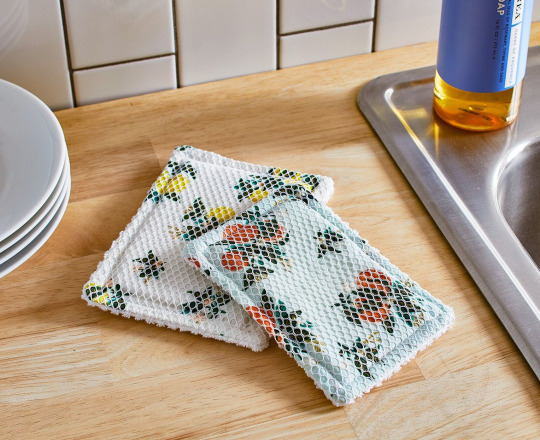
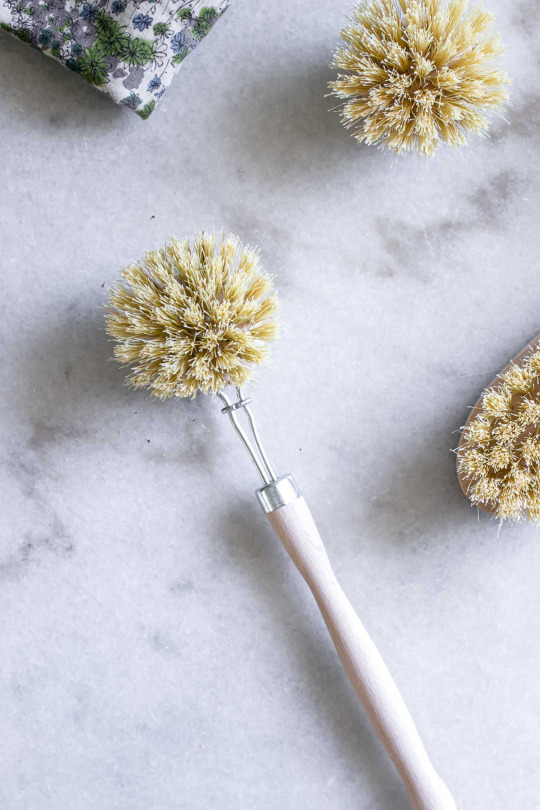



6 Eco-Friendly Alternatives to Kitchen Sponges
Natural Cellulose Sponges, Reusable Cloth Sponges, Wooden Dish Sponges, Reusable Dish Rags, Copper Scours, Scours made from Natural Materials (eg. coconut coir)
Traditional kitchen sponges are made of a mixture of cellulose, a naturally-occurring wood fiber, and synthetic materials like polyethelene plastic mesh to provide durability and a scouring surface. This combination is what makes up the typically yellow and green colored sponges that are most commonly sold today.
In addition to its mixture of natural of synthetic materials, kitchen sponges are also usually treated with antibacterial agents to prevent the growth of harmful bacteria (and then spreading it around your kitchen each time you clean). Add to this that most kitchen sponges have a lifespan of tops a few weeks – and they’re packaged in plastic – and you can see how these are not a low waste option for keeping your kitchen clean.
In addition, antibacterial agents added to sponges typically include triclosan, and according to the Environmental Working Group, “the U.S. FDA advisory committee has found that household use of antibacterial products provides no benefits over plain soap and water, and the American Medical Association recommends that triclosan not be used in the home, as it may encourage bacterial resistance to antibiotics.”
#p#txt#mindful consumption#zero waste#low waste#eco friendly#eco conscious#ecofeminism#sacred spaces#solarpunk#mindful living#soft living#slow living#ethical consumption#green living#sponges#sidewalkchemistry
111 notes
·
View notes
Note
Do you have a go-to calcium supplement for your birds? Mine never got into cuttlebones and are being fussy about spinach
I’ve always just used cuttlebone since it’s one that’s incredibly hard to overdose them with, I would grind it on top of their veggies and mix it in to hide the taste of it! If they’re super picky you can make mashed sweet potato and mix in the calcium that way, freezing it in ice cube trays and thawing out each cube as needed!
Spinach is a debatable calcium supplement as is anyways since the oxalates in the spinach bind to most of the calcium which makes it so that not much calcium ends up getting absorbed by the body anyways! Different veggies that don’t have that issue might be something like kale, broccoli has quite a bit less but is usually readily consumed by most birds so that’s a decent option
Calcium rich nuts are usually the easiest to feed: sesame, flax, almond, walnut, etc. if you’ve got a bird that doesn’t put on excess weight with more nuts in the diet that may be an option to explore for them! Again they could be blended in to a powder and sprinkled on veggies if the bird is pickier.
Lastly is egg shells, you do need to be careful however as some eggs may be sprayed, coated, or have inks on them which are not safe to feed. If they are free of those you can simply boil some eggs, bake the shells in the oven to dry them out (prevent bacterial growth) and serve them as is or grind to a powder to mix in with veggies
Otherwise I’d discuss with a vet regarding suitable supplements, most will have a powder that you sprinkle over their veggies.
Edit: also worth noting the importance of UV light! If they don’t have an avian UV bulb or outdoor access (not light through a window) their body will not be able to properly synthesize calcium
24 notes
·
View notes
Note
Hello, saw your post about fox pokemon. What exactly are eevee? Always grouped 'em in with fox pokemon. Are they atleast canine like?
that's more of a loaded question than you might think! for a very long time, where eevee rests on the mammalian family tree is the sort of thing you could ask 10 biologists and get 13 answers, and maybe a shouting match. eevee has wildly variable internal features that make placing it in a certain spot really difficult- i'm talking like minute differences in the shapes of bones that would usually be used to identify certain groups. you might think that with the discovery of dna we'd be able to definitively place it where it belongs, but eevee's genetic makeup is remarkably plastic (changeable) and unstable. there's even quite a bit of research looking into cancer prevention based on its genome because of that (the species isn't immune to cancer, but has a much lower incidence of it than you'd expect given its penchant for frequent mutation).

so, let's talk about some mammals! particularly, a large group called the carnivora.
(note that "carnivora" or "carnivoran" sound similar to but do not mean the same thing as "carnivore". carnivores are any animal that eats meat, while carnivorans (members of the carnivora) belong to a specific branch of the mammal family tree. most carnivorans are indeed carnivores, but not all.)
so, carnivora! almost every person that's proposed a place on the mammalian family tree for eevee has placed it in or near the carnivorans. it's a group that is made up of two smaller clades: the feliforma (the cat-like carnivorans) and the caniforma (the dog-like carnivorans). the feliforma includes groups like the cats, hyenas, and mongooses. the caniforma includes groups like the dogs, bears, weasels, and seals.

some examples of the feliforms on the left, and caniforms on the right. of the feliforms we have pyroar and meowstic (cats), mightyena (a hyena), and yungoos (a mongoose). of the caniforms we have houndour (a dog), buizel (an otter), sealeo (despite the name, it is a walrus), ursaring (a bear), and zorua (a fox). you hear that right, mightyena is closer to a cat than a dog, and yungoos is entirely unrelated from mustelids (ie weasels, otters, badgers) like buizel or furret.
for an example of what i mean with the thing about eevee's weird morphology defying classification- there's this bit of bone on either side of the bottom of the mammalian skull called the "tympanic bulla" (basically just "Ear Balloon", since it's a hollow chamber). caniforms have only one chamber in their ear balloons, and feliforms have two chambers. eevee has.. both, somehow. if you took 2 eevee skulls and looked at their tympanic bullae, you might find that one has one chamber and one has two. that's.. really weird, just so everybody knows. that sort of thing isn't something you see in basically anything but eevee, same goes for its wildly variable genome.
so, is eevee a caniform, a feliform, or something else? our best answer came in the form of three extremely well-preserved fossils from the johto region, dating back to about 44 MYA, just a few million years before the feliform and caniform branches actually separated.
three pokemon were found, exceptionally preserved- including soft tissues!-, all together. they'd been buried in a mudslide and fossilized right next to/on top of each other, the mineral content of the soil just right to discourage bacterial growth, allowing the soft tissues to stay intact and fossilize as-is.
the fossils were collected and CT scanned to see the bones within the mineralized soft tissues- each of the three individuals appeared to be the same species, with near-identical skeletons. none of the skeletons showed type characteristics (like lignin or metallic structure), making type hard to discern. but what we could tell from the bones is that these were animals just outside of the carnivora- closely related to the ancestors of all carnivorans. and excitingly, they bared a close resemblance to a few skeletal features found only in eevee.
despite the homogeneity of their bones, the fossilized pokemon's soft tissues differed- the fur, in color and pattern (the fossilized fur no longer retains its color, but by looking at microscopic pigment cells within preserved fur and feathers we can deduce color and pattern!) and certain organs- around the throat area, each individual had an elemental organ like many pokemon today use to fuel and store energy for their typed attacks. each of the three fossilized pokemon's throat organ was different in elemental specialization: one fire, one water, and one electric.

(reconstructions of the three pokemon in question. top electric, left fire, and right water.)
see where i'm going, here? it's unknown if the three individuals represent three different evolutions, or three differently typed forms (like oricorio) of a singular pokemon, and a pre-evolved form is not yet known, if it existed at all. but we can say with some confidence that these guys may well have been ancestors of eevee as we know it today, which places eevee within the non-carnivoran carnivoraforms- something that emerged before the feliforma and caniforma existed, with traits found in both and found in neither.
386 notes
·
View notes
Photo
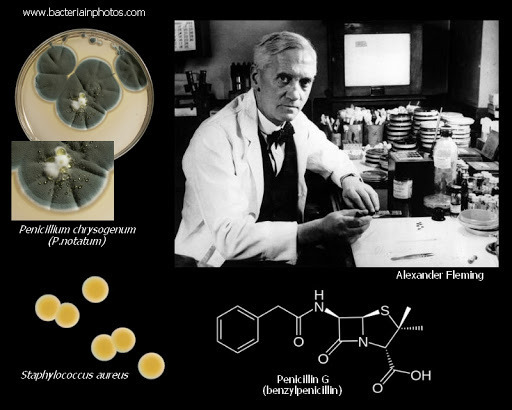
On 28th September 1928 Alexander Fleming, a Scottish researcher discovered penicillin.
I know we all like to blow our own trumpets and us, as Scots gave the world a lot, certainly punching above our weights, per head of population, but let’s be honest, Fleming never had much of a clue what to do with his discovery at first.
Often described as a careless lab technician, oor Alex returned from a two-week holiday to find that a mould had developed on an accidentally contaminated staphylococcus culture plate. Upon examination of the mould, he noticed that the culture prevented the growth of staphylococci. Staphylococcus is a bacteria that can be found normally in the nose and on the skin.
That’s not to say he wasn’t clever, he knew this was something special and in an article he had published in the British Journal of Experimental Pathology in 1929 he wrote;
“The staphylococcus colonies became transparent and were obviously undergoing lysis … the broth in which the mould had been grown at room temperature for one to two weeks had acquired marked inhibitory, bactericidal and bacteriolytic properties to many of the more common pathogenic bacteria.”
At the time Fleming was actually working on the flu virus, penicillin was a bi-product of what most of us men are guilty of, - not doing the washing up!
Fleming’s laboratory notebooks are sketchy, and his subsequent accounts of the discovery are contradictory. The evidence of the first culture, which he photographed, indicated that he observed lysis, the weakening and destruction of bacteria—as in his lysozyme studies. But sometimes he described the key observation as an instance of inhibition or prevention of bacterial growth in areas affected by the mould “juice,” evidenced by a clear zone surrounding the mould.
Although these two effects occur under quite different conditions, Fleming probably forgot which observation came first, for in the months subsequent to the original observation he conducted many experiments while varying conditions systematically.
He discovered that the antibacterial substance was not produced by all moulds, only by certain strains of Penicillium, namely, Penicillium notatum. Although he could not isolate it, he named the active substance “penicillin.” He studied methods of producing the impure product and determined its stability at different temperatures and over various lengths of time. He investigated its effect on many microbes, curiously omitting the familiar spirochete that causes syphilis (which Salvarsan controlled but did not eliminate). He tested its toxicity on a laboratory mouse and a rabbit. Forever after, it has been a puzzle why he did not inject these or other laboratory animals with staphylococcus or other disease-causing bacteria before injecting them with the fluid containing penicillin. Perhaps the explanation lay in his belief that cures come from within the body itself, rather than from an external agent. So he was not looking for a curative agent but rather focused on his new find as a topical antiseptic. In later years he claimed that the difficulties he had experienced in isolating and stabilizing penicillin, let alone the problems of producing sufficient quantities for clinical trials, had prevented him from realising the full fruits of his research.
So the main point of me saying this is it looks like he ran out of ideas because come 1931 he had stopped working with penicillin. In fact apart from his own work, little notice was taken by the scientific community of the paper he published.
However his research was continued and finished by Howard Flory and Ernst Chain, researchers at University of Oxford who are credited with the development of penicillin for use as a medicine in mice. It wasn’t until 1939 that Florey and Chain, led a team of British scientists who successfully manufactured the drug from the liquid broth in which penicillin grows.
They, along with Fleming, were given the 1945 Nobel Prize in Physiology or Medicine for their roles in the discovery and development of this agent, and the pair deserve as much credit for carrying on with the development of penicillin, so yes well done Alexander Fleming, but let’s not forget the others.
265 notes
·
View notes
Text
Lamb's Ear - Stachys Byzantina
Basic Plant Facts and Care:
AKA: Wooly betony, woundwort, wooly woundwort, betony, or lamb’s tongue
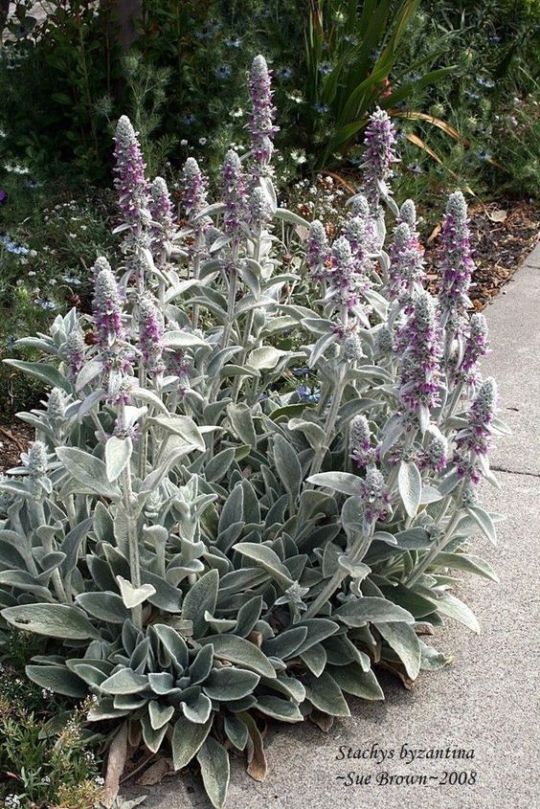
Family: Lamiaceae (Mint family)
Native to: Middle East, Armenia, Iran and Turkey
Sun needs: Sun-loving! Full sun to part shade
Water needs: One good watering per week, drought tolerant. Overwatering very bad!
Soil needs: Well-draining, evenly moist to dry soil. Slightly acidic (6.0–6.5 pH)
Feeding needs: Doesn't need feeding
Seeds & Growth: Barely cover seeds. Best way to grow is by dividing (they naturally propogate on their own). Spreads by underground shoots.
Common issues: Overwatering or high humidity can cause fungal diseases
Flowers: Blooms in spring, some varieties rarely bloom. Flowers are small, pink or purple, and grow on stalks.
Edibility: Edible and can be used in teas, tinctures and infusions. Young, fresh leaves are best for eating. Mild taste others describe as "fruity" or like apples. (I've nibbled on a leaf but idk about the taste. May try in a salad eventually).
Warnings: Possible interactions with blood pressure medications
Medicinal Uses:
Infusions of dried leaves are good for colds, fevers, diarrhea, sore mouth, gum and throat infections, and asthma.
Crush and wrap over bee or wasp stings or insect bites to reduce pain and swelling.
Historically used for dressing wounds, particularly on the battlefield - absorbs blood and helps it to clot quickly and the antibacterial, antiseptic, and anti-inflammatory properties are bonuses so this makes the leaves a great alternative to store-bought bandages. Not just bandages but the leaves can also be used as toilet paper, female hygiene products, and makeup removal swabs!
Antiseptic, anti-inflammatory, astringent, antispasmodic, hypotensive, stomachic, analgesic and anti-bacterial properties
Now for the Magick!
Element: Water
Planetary: ☾ Moon, ♀ Venus
Energy: Receptive
Vibe(UPG): Gentle and nurturing but also hardy
-Protection, repel nightmares, healing, purification, negating hostile influences
-Dried and crumbled lamb’s ears sprinkled around the perimeter of your home forms a protective barrier that no negativity or evil can pass.
-Once dried you can hang it over your door ways to help prevent negative energies from coming into your home.
-Use it in a charm bag and carry it around to help strengthen protection spells.
-Use it as a component for any healing spell work.
#witch#hearth witch#kitchen witch#pagan#witch blog#herbs#kitchen witchery#herbal magick#witchcraft#green witch#witchy#witch aesthetic#witches#witchy vibes#baby witch#cottage witch#earth witch#forest witch#hedge witch#kitchen witchcraft#lunar witch#nature witch#pagan witch#witch community#witch core#witch familiars#witch history#witch tips#witchblr#witchcore
37 notes
·
View notes
Text



how to reduce acne (and what is acne)
acne is a skin condition that occurs when hair follicles become clogged with oil and dead skin cells. it typically results in whiteheads, blackheads or pimples that can appear on the face, forehead, chest, upper back and shoulders. acne is most prevalent among teens but can affect people of all ages. several factors contribute to acne, such as excess oil production, buildup of dead skin cells, bacterial growth and inflammation.
acne is not inherently 'bad' but it is a source of discomfort for many people. while acne itself is not a bad thing, it can lead to potential complications if not managed properly, such as scarring or emotional distress.
when reading this post, it is important to remember that everyone's skin is different and what works for one person may not work for another. i'd like to add that i am not a dermatologist, and this post is written with my own experience in mind as well as research online.
reducing acne involves a combination of skincare practices and lifestyle adjustments. here are some recommended actions:
properly wash your face
cleanse your face twice daily to remove excess oil, sweat and dirt. some common face washing mistakes include using the wrong cleanser, over-washing your face, under-washing your face, the wrong water temperature and using a dirty washcloth. don't worry if this all seems confusing, here's a post on how to properly wash your face.
know your skin type
use products suitable for your skin type only--oily, dry, combination or sensitive. you can find this out by visiting a dermatologist or (alternatively) researching the skin types and seeing which best matches your skin.
moisturise
moisturiser curbs dryness, which balances oil production in your face and therefore helps to prevent acne. choose a non-comedogenic moisturiser to not clog your pores.
consider over-the-counter treatments
think about acne treatments with ingredients like benzoyl peroxide or salicylic acid.
stay hydrated
drink plenty of water to maintain skin hydration. good hydration helps to maintain skin elasticity, supports the skin's protective functions and prevents sunburn, sensitivity and oiliness. women should drink about 2.7L of fluids every day (including water, other beverages and food).
limit makeup
use minimal makeup and ensure that it is non-comedogenic. don't stop wearing makeup if it is something you enjoy, however, try to limit it in acne-strong areas.
don't touch your face
this is a big one, and yet so many people do it. keep your hands away from your face to prevent the spread of bacteria. seriously, you use your hands for so much--you don't want the germs of everything you've touched on your face.
limit sun exposure
protect your skin with appropriate sunscreen. and remember to re-apply! limiting sun exposure also reduces skin cancer risk. balance is key, though, because the sun is necessary for vitamin d production and maintaining circadian rhythms.
exercise regularly
physical activity can help reduce stress, which may contribute to acne.
enjoy a healthy diet
eating a well-balanced diet can support skin health. consider reducing dairy and high glycemic foods. a diet with a low glycemic index may help balance hormone levels, which is the same effect when insulin spikes occur less. essential nutrients promote skin health and help to repair and maintain the skin barrier.
invest in stress management
find ways to reduce stress, such as journaling or going for a walk. stress can worsen acne. this is because, under stress, the body's healing process slows down, meaning acne can take longer to heal and become more severe. stress hormones can also increase oil production, leading to clogged pores.
(images are from pinterest)
#elonomh#elonomhblog#student#student life#academia#chaotic academia#study blog#productivity#studyblr#that girl#that girl aesthetic#becoming that girl#it girl energy#clean girl#pink pilates princess#wonyoungism#it girl mentaility#it girl aesthetic#it girl#dream girl#pinterest girl#girl blogger#level up journey#leveling up#acne#acne treatment#skincare#glowingskin#skincare routine#skincare tips
89 notes
·
View notes